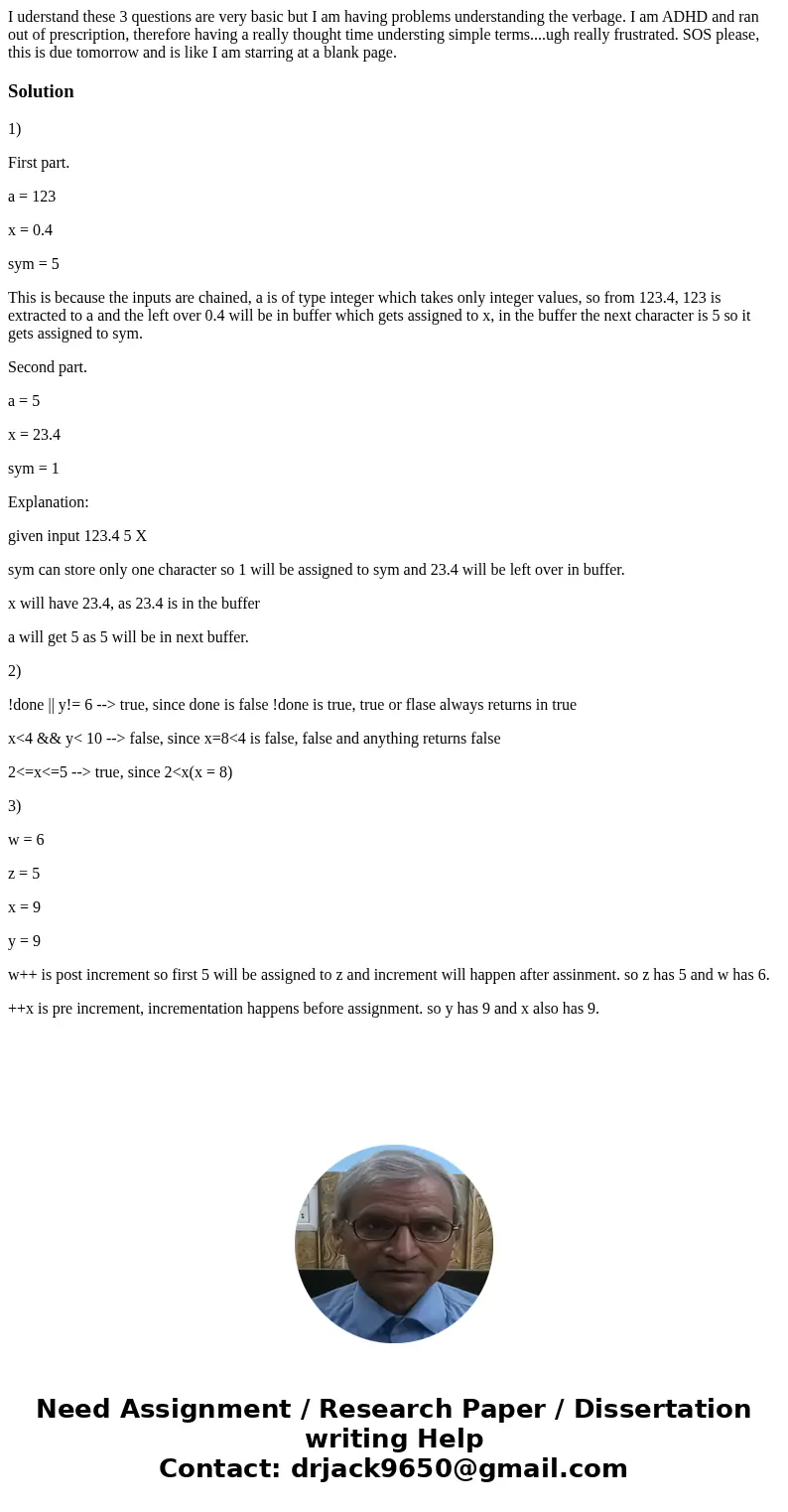I uderstand these 3 questions are very basic but I am having
I uderstand these 3 questions are very basic but I am having problems understanding the verbage. I am ADHD and ran out of prescription, therefore having a really thought time understing simple terms....ugh really frustrated. SOS please, this is due tomorrow and is like I am starring at a blank page.
Solution
1)
First part.
a = 123
x = 0.4
sym = 5
This is because the inputs are chained, a is of type integer which takes only integer values, so from 123.4, 123 is extracted to a and the left over 0.4 will be in buffer which gets assigned to x, in the buffer the next character is 5 so it gets assigned to sym.
Second part.
a = 5
x = 23.4
sym = 1
Explanation:
given input 123.4 5 X
sym can store only one character so 1 will be assigned to sym and 23.4 will be left over in buffer.
x will have 23.4, as 23.4 is in the buffer
a will get 5 as 5 will be in next buffer.
2)
!done || y!= 6 --> true, since done is false !done is true, true or flase always returns in true
x<4 && y< 10 --> false, since x=8<4 is false, false and anything returns false
2<=x<=5 --> true, since 2<x(x = 8)
3)
w = 6
z = 5
x = 9
y = 9
w++ is post increment so first 5 will be assigned to z and increment will happen after assinment. so z has 5 and w has 6.
++x is pre increment, incrementation happens before assignment. so y has 9 and x also has 9.

 Homework Sourse
Homework Sourse